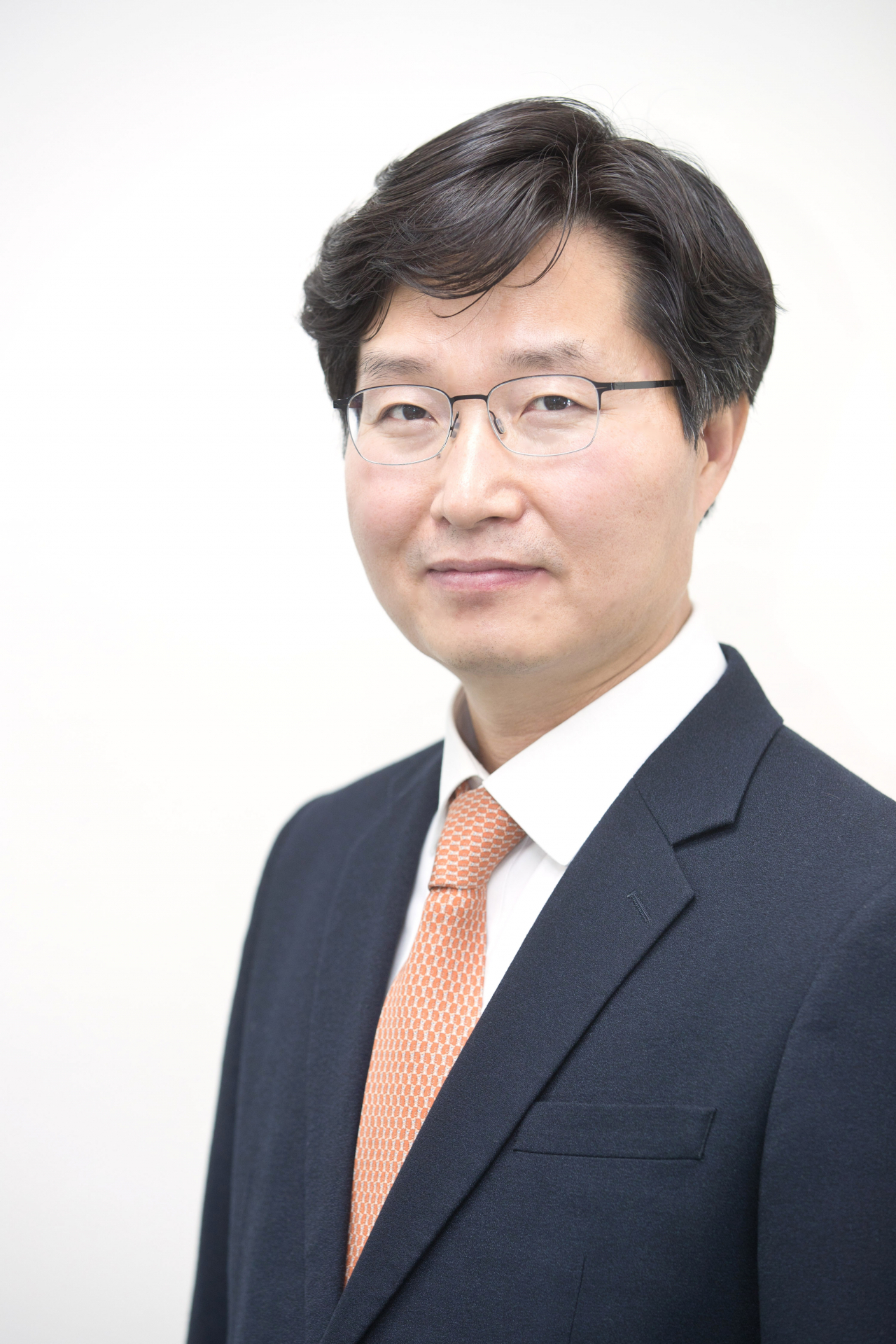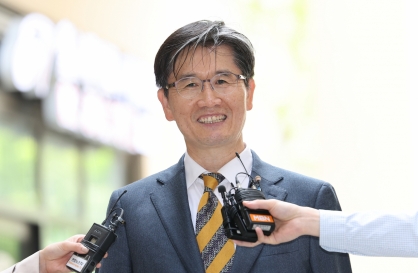 |
Koo Hyuk-chae, director-general of R&D policy bureau at the Ministry of Science and ICT (Ministry of Science and ICT) |
By Koo Hyuk-chae
Director-general of R&D policy bureau
Ministry of Science and ICT
Starting with the invention of the transistor at Bell Labs in the United States in 1947, semiconductors have constantly advanced and are now embedded in all devices that require computing power. Last year, the global semiconductor market size amounted to approximately $640 billion, of which 20 percent, or $130 billion, was occupied by the Korean semiconductor industry. The semiconductor industry is the No. 1 industry in our economy that represents approximately 7.45 percent of last year's gross domestic product and is a major national security asset in international politics.
In fact, given their importance and value, semiconductors have not been significantly highlighted in the international political arena over the past few decades, until the vulnerability of the semiconductor supply chain was revealed by the COVID-19 pandemic. Recently, the importance of semiconductors has been emphasized not only in the economy but also in terms of diplomacy and security due to the pandemic. However, from the perspective of the history of civilization, semiconductors may hold much greater importance than what is often mentioned in the media.
In human civilization history, the definition of space was determined by the technology of that era, and the history of civilization was determined by that space. Civilization emerged first in the so-called Fertile Crescent of Mesopotamia and the Egyptian region. People in this era created civilization in fertile agricultural areas by walking, running and using wheels and horses to travel on land. Since then, with the development of the "ship," the Greek and Roman civilizations emerged centered on the Mediterranean Sea. In the late 15th century, countries such as Portugal, Spain and England, close to the Atlantic Ocean, established new dominant civilizations by utilizing “triangular sails” and “galleons” to control the Atlantic and Indian Oceans.
The US gained hegemony by expanding its space across the Atlantic and Pacific Oceans based on petroleum energy. When the physical space on Earth reached its limits in the 20th century, the realm of hegemony expanded into digital space. It can be speculated that the US currently maintains its hegemony because of its dominance not only in the physical space on Earth but also in the digital space.
The digital space, which was ushered in by the Internet in the 1990s, continued to expand due to smartphone technology in the 2010s. This digital space is composed of semiconductors that can memorize and process zeros and ones. In the not-too-distant future, when the era of the internet of things (IoT) and artificial intelligence fully unfolds, there will be a significant expansion of this space. As a result, the demand for semiconductors will explode. It is at this moment that Korea can seize a golden opportunity to become a forerunner in the race for civilizational hegemony driven by semiconductors.
Korea's history in the semiconductor industry spans over 50 years. It started with the challenge of wafer processing beyond simple assembly at Hankook Semiconductor which was founded in 1974. In 1981, the government announced the “Electronic Industry Promotion Plan”, followed by the “Comprehensive Semiconductor Industry Promotion Plan” in 1985 through which it invested in the localization of semiconductor technology. Samsung, which acquired Hankook Semiconductor, developed 64K DRAM in 1983 and switched to a government-company joint development system in 1985 to shorten the development period, and simultaneously developed 1M DRAM and 4M DRAM. Since then, the Korean semiconductor industry continued to grow and accumulate experience. Based on this experience, Korea needs to focus on semiconductor technology development and talent cultivation to take the lead in the competition for global semiconductor supremacy and seize the upcoming once-in-a-civilization opportunity.
To this end, the Ministry of Science and ICT has established a “Semiconductor Future Technology Roadmap,” which outlines the technological blueprints for the fields of device, design and process. In order to secure the competitiveness of system semiconductors that responds to the era of the IoT and AI, the roadmap focuses on PIM semiconductors and other artificial intelligence semiconductors, 6G communication, power, and vehicle semiconductor design technologies. In addition to future device technologies such as ferroelectrics, magnets, and memristors, a blueprint has been drawn for the development of FEOL and BEOL for ‘Beyond Moore’. Based on the roadmap, national resources are strategically invested in semiconductor R&D, and systematic policies and projects are being implemented.
In addition, to supplement the existing short-term R&D research, national semiconductor laboratories will be selected and supported from a mid- to long-term perspective. This long-term R&D support will secure semiconductor source technology in the medium to long term, create synergy with existing businesses and equip our country with future competitiveness. Moreover, the Public-Private Semiconductor R&D Consultative Group is being operated in the planning, operation, and management of various R&D policies and projects to mobilize the collective capabilities of the government, as well as the entire nation.
Finally, talent cultivation is also crucial. In addition to the existing graduate school-centered training of high-quality human resources, the Ministry of Science and ICT recently launched the MyChip Service where undergraduate and graduate students can manufacture and verify their own semiconductor chips by themselves. Previously, such opportunities were practically non-existent for undergraduate students, so the capabilities that could be developed within the university education system were limited. However, by providing a highly effective educational model that cultivates chip-designing talent with practical capabilities through the MyChip Service, the ministry aims to achieve both quantitative and qualitative growth in talent cultivation.
Currently, Korea is considered to have reached its prime in the 5,000-year history of the Korean Peninsula. However, if we steadily prepare for the future in the semiconductor field where we have had a competitive edge in the global stage since the 21st century, we may seize an opportunity to set a milestone in the history of human civilization. Therefore, it is essential to prepare and develop strategies to secure semiconductor supremacy for the present and the future.
Koo Hyuk-chae is the director-general of R&D policy bureau at the Ministry of Science and ICT. The views expressed in this column are his own. – Ed.





![[KH Explains] No more 'Michael' at Kakao Games](http://res.heraldm.com/phpwas/restmb_idxmake.php?idx=644&simg=/content/image/2024/04/28/20240428050183_0.jpg)

![[Weekender] How DDP emerged as an icon of Seoul](http://res.heraldm.com/phpwas/restmb_idxmake.php?idx=644&simg=/content/image/2024/04/25/20240425050915_0.jpg)